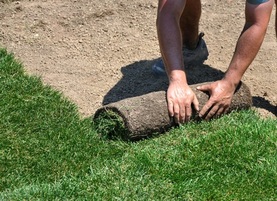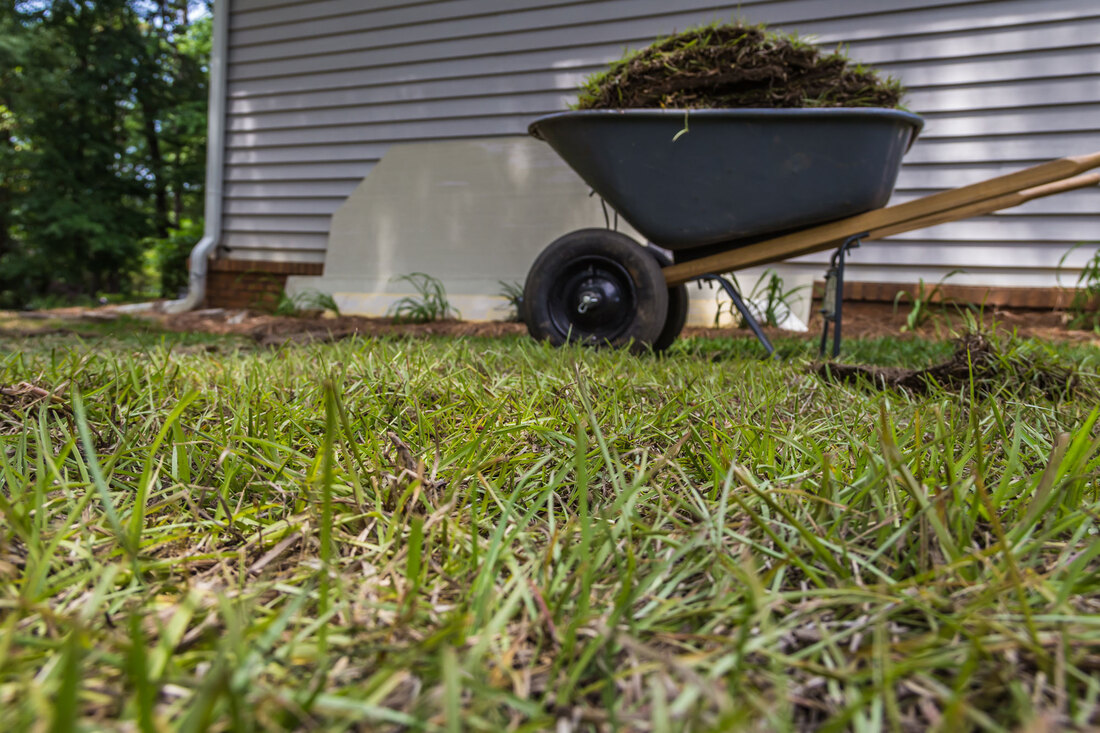|
Fall is the time for reflection, transition, and preparation. It's also the perfect time to start the recovery process for your lawn after it has faced the brutal impacts of a summer heatwave and drought. While most warm-season grasses are known for its resilience and low maintenance, extreme conditions can still take a toll on its health. Here's a guide to help you nurse your lawn back to its verdant best.
1. Assess the Damage Before diving into any recovery actions, take a stroll around your lawn to assess the damage. Check for areas that are brown, thin, or bare. This will give you an idea of where to focus your efforts and how much intervention is needed. 2. Start with Proper Watering Hydration is key to help your lawn recover. After a prolonged drought:
Heatwaves and drought can compact the soil, making it difficult for water, oxygen, and nutrients to reach grass roots.
Thin or bare patches can benefit from new sod:
After a drought, your lawn is starved of essential nutrients. Reintroduce them with a balanced, slow-release fertilizer:
Weeds can take advantage of a weakened lawn. Address them in the fall to give your grass a better chance of thriving come spring.
Your mowing habits can impact the recovery process:
Allow your recovering lawn some peace. Minimize foot traffic and avoid parking vehicles or placing heavy equipment on it. This will reduce compaction and stress. 9. Monitor for Pests and Diseases Stressed lawns can attract pests like chinch bugs or fall prey to diseases like brown patch. Regularly inspect your lawn and address any issues immediately. 10. Be Patient and Consistent Recovery is a process. While fall is a great time to initiate these efforts, remember that full recovery might take until the next growing season. Stay consistent in your care, and before you know it, your lawn will be the lush green oasis you remember. In conclusion, while heatwaves and drought can severely impact your grass lawn, with the right fall recovery strategies, it's possible to bring it back to life. A combination of proper watering, aeration, sod, and attentive care can help your lawn rebound and prepare it for the next growing season.
2 Comments
 Laying sod in your yard is instantly gratifying. You can turn barren areas into an area with a perfect grass in a day. First things first, you will need to have the ground prepared to help the sod take root quickly. The soil needs to be loosened to a depth range between four and six inches. If you need to bring in additional soil to fill in low spots, we recommend either top soil with a sandy loam or river-silt. Fertilize the soil with a slow release, complete fertilizer. Follow the directions on the bag but do not water it in. This is not recommended from September 1st through April 15th. It is important to remember sod comes in its own environment. It is very important to avoid leaving the sod moisture deprived for very long. Apply a lot of water to the sod within thirty minutes of laying the first piece. Leave your sprinkler in one place for two hours and then move it until the entire newly laid sod has been equally soaked. Initially you will need to keep the sod wet for the first five to fourteen days depending on temperature. Do not let the sod dry out until the union between the sod and soil surface is firmly established. This means the roots have grown into the soil and the grass cannot easily be lifted. During the cool months, these instructions are not as crucial as sod will not require as much water. For the first week water thoroughly every day. For the second week, water every other day. If it rains, it should be at least one inch before skipping a watering. After two weeks, water as needed. When the grass looks healthy and rooted, you may let it dry out some to promote root development. The best time to water is in the morning, so less water is lost by evaporation. The worst time to water is in the evening, because the lawn stays wet all night and this encourages disease development. Also, lawns watered too frequently tend to develop shallow root systems, which may make the sod more susceptible to grub damage. When the grass is 50% higher than you desired mowing height, it should be mowed. Mow often enough that you do not remove more than 1/3 of the blade at one time. Clippings are beneficial in that they return nutrients and organic matter to the soil. If grass is mowed on a timely schedule, clippings do not contribute to thatch. |
AuthorCharlie Casselberry Categories
All
Archives
April 2024
|
Contact |
Services |
About |
Locations
|
GreenSeasons
|
Baton Rouge Office
11628 S Choctaw Drive, Suite 227 Baton Rouge, Louisiana 70815 |
Greenwell Springs Office
14461 Frenchtown Road Greenwell Springs, LA 70739 |
Slidell Office
56010 Highway 433 Slidell, Louisiana 70461 |
© 2020 GreenSeasons



 RSS Feed
RSS Feed
